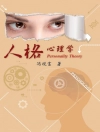Core Value Therapy: A Professional Overview
Core Value Therapy began in early 2007, focusing on anger management. Clients often mentioned that people kept pressing their buttons. To address this, I drew a circle on the whiteboard and initiated a conversation about what bothered them about others’ actions. This revealed a value being breached by others.
Since then, I have observed that clients describe their stories using values, which influence their emotions. However, clients may not always be aware of their values. For example, clients might say, ‘I don’t like it when people disrespect me and don’t accept what I say.’ While this may not seem like a significant revelation, it highlights that clients often do not recognize the value words in their statements, such as respect and acceptance. Assisting clients in discovering, connecting with, and taking charge of their value words is now known as Core Value Therapy.
In Core Value Therapy, there is a distinct difference between what clients value and their personal values. Do they live by the values they hold when others breach them? Do they respect others in return? They want others to accept them, but do they have self-acceptance? Simply telling clients their value word does not increase their awareness; they must discover it for themselves.
I facilitate this discovery by reflecting their statements back to them, helping them see if they recognize the value they used. Often, clients cannot identify these values. I write their statements on the whiteboard and ask them to reflect on the values they used. This process is detailed in my book and podcast, ‘The Values Guy’ on Spotify, where I unlock how to assist clients in becoming aware of the values that control their thoughts, feelings, and actions.
Key Aspects of Core Value Therapy
One key aspect of Core Value Therapy is listening for value words in stories that evoke strong feelings, such as anger, annoyance, or offense. These values reappear throughout the conversation and influence a client’s behaviour, thoughts, and emotions. Once a client discovers their core value, they improve remarkably in emotional regulation by applying these values to themselves in distressing situations. The core value becomes the center of the problem and the solution, shifting the locus of control from others back to themselves.
Another key aspect is that values are often hidden from the conscious mind, operating from an unconscious state. Many clients do not understand why they get angry. Once the value is revealed, life starts to make sense. Clients report increased self-awareness, improved relationships, and better emotion regulation when they understand the three directions of values: to self, to others, and their expectations from others. Many clients want others to fulfill their values, which they cannot fulfill themselves, creating impossible demands and causing relationship conflicts.
Tabella dei contenuti
vii
Foreword
ix
Preface
xi
Introduction
xv
Overview
xix
Core Value Therapy
xxi
Primary Core Value
xxiii
Sub-Core Values
xxv
Therapeutic Method
xxix
Unlocking the Primary Core Value
xxxiii
General Discussion
xxxv
Therapeutic Method – Stage 2
xxxvii
From other – to others – to themselves
xli
Therapeutic Method – Stages
xlix
Therapist view of Core Value Therapy — Dr Sabrina Martin
Ph D (Clinical Psychologist)
li
Therapist view of Core Value Therapy — Sinéad Fahey,
Psychologist
liii
A Student’s view of Core Value Therapy
lv
Afterword
lvii
Acknowledgments
lix
About the Author
lxi
Conferences and Training












